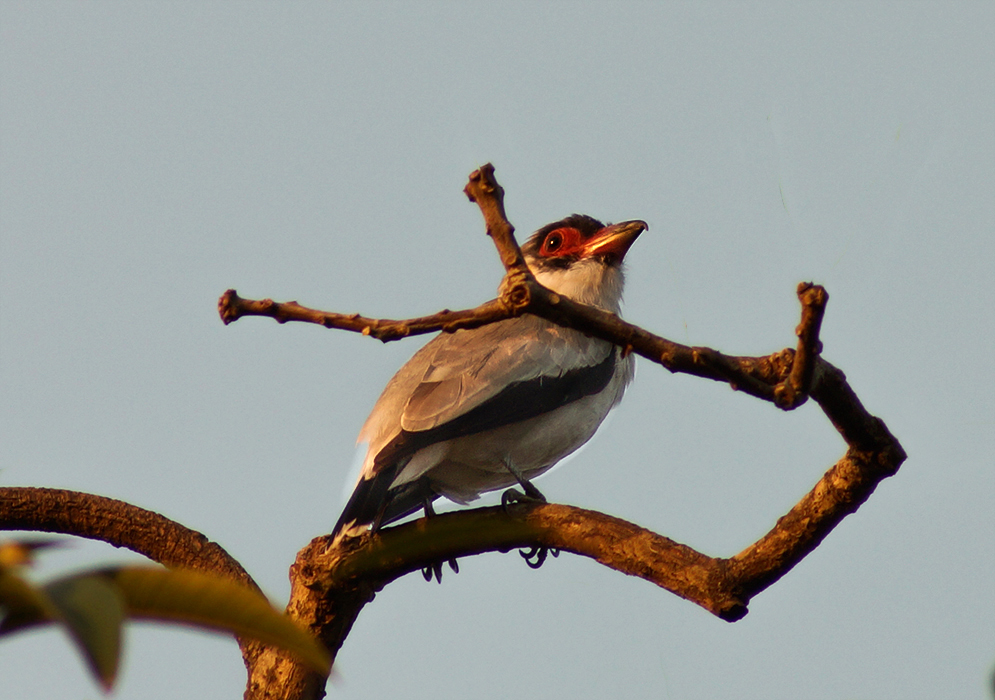This post has 11 Simple Fields-fields attached. Show fields.

The Masked Tityra is a medium-sized perching bird native to the Americas. This species exhibits a notable sexual dimorphism in plumage. Adult males are predominantly white with black markings, a distinctive bare red face mask, and eye rings. Their tails and wings are edged in black, and they have a red bill that fades to pale at the tip. Female Masked Tityras, in contrast, display more brownish upper parts. The Masked Tityra is found across a broad range extending from Mexico, close to the United States border, down through Central America to northwestern and central South America, reaching as far south as Paraguay. They are adaptable birds, preferring forest clearings, edges, second growth, and semi-open habitats like plantation shade trees. They are typically observed alone or in pairs, perched conspicuously while foraging. The species has several subspecies, each with a slightly different range. These include T. s. semifasciata in regions of Brazil, French Guiana, and Paraguay; T. s. griseiceps in Western Mexico; T. s. hannumi in Northwestern Mexico; T. s. personata in Eastern Mexico and parts of Central America; T. s. costaricensis in parts of Central America; T. s. columbiana in parts of Colombia and Venezuela; and T. s. nigriceps in southwestern Colombia and northwestern Ecuador. Their diet mainly consists of medium-sized fruits, and during the breeding season, they feed large insects to their chicks. Nesting typically involves the use of an old woodpecker nest or the crown of a dead palm tree. The female incubates the eggs alone, but both parents participate in feeding the chicks, which are fledged approximately three weeks after hatching. The Masked Tityra is currently classified as Least Concern by the IUCN. Photographed in Minca, Colombia.



